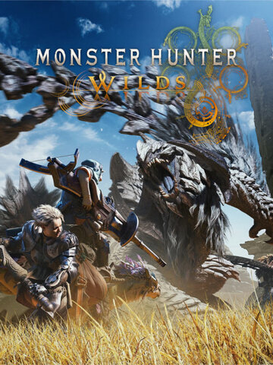Core Keeper is a sandbox action-adventure survival game developed by Pugstorm and published by Fireshine Games. Combining elements from classics like Terraria, Stardew Valley, and Minecraft, this 2D pixel-art title offers players a rich underground world to explore, mine, farm, build, and battle. Its deep progression, online co-op, and mysterious ancient technologies have made it a standout indie success on Steam and early-access platforms.
Whether you're digging deep to uncover relics, farming glowberries, or facing off against ancient biome bosses, Core Keeper blends survival gameplay with exploration in a fresh, compelling way. In this article, we’ll take a detailed look at the world of Core Keeper, how it evolved from Early Access to a major indie title, and why it deserves your attention.
1. The Origins of Core Keeper
A Pixelated Beginning
Core Keeper was released in early access in March 2022. Developed by Swedish studio Pugstorm, the game immediately drew comparisons to Terraria for its pixel art and underground aesthetic. But as players dove in, it became clear that Core Keeper had its own unique rhythm—focused on automation, exploration, and a mysterious central "Core" that links the world together.
A Community-Driven Success
With regular updates, a growing Discord community, and strong support on Twitch and YouTube, Core Keeper has developed a dedicated fan base. Its approachable mechanics and infinite replayability have helped it thrive in the indie survival space.
2. Gameplay Overview and Core Mechanics
Dig, Craft, Survive
Core Keeper puts you in the shoes of an explorer who awakens deep underground near an ancient Core. With only basic tools, you must mine surrounding blocks, collect resources, and slowly build a livable base. Core gameplay includes:
-
Mining and excavation
-
Farming and cooking
-
Combat and boss fights
-
Crafting and automation
Each session can be solo or with up to 8-player co-op online.
Procedural World Generation
The underground world is procedurally generated, meaning each playthrough has new layouts, biomes, and secrets. Biomes include Clay Caves, Azeos’ Wilderness, Sunken Sea, Desert of Beginnings, and more—each with its own creatures, items, and bosses.
3. Building and Base Management
Home is Where You Craft
Players can build vast underground bases using mined materials like wood, stone, and iron. Rooms can house crafting stations, chests, beds, and lights. Smart layout improves efficiency, especially when building automated farms or production lines.
Electricity and Automation
As you progress, the game introduces electricity, conveyor belts, and automation machines. This creates a late-game tech tree similar to Factorio or Satisfactory, enabling automated farming, smelting, and even mining.
4. Farming, Cooking, and Food Systems
Grow Your Resources
Farming is crucial in Core Keeper. You can plant seeds gathered from biomes to grow food like heart berries, glow tulips, and shrooms. Crops can be watered manually or automated later.
Advanced Cooking Mechanics
Food is more than sustenance—it provides buffs. By combining two ingredients in a cooking pot, players create unique recipes that offer health regen, speed boosts, or elemental resistance. Discovering and optimizing recipes is a mini-game in itself.
5. Combat and Boss Encounters
Underground Challenges Await
Combat in Core Keeper is real-time and weapon-based. You’ll craft swords, slingshots, fire staffs, and explosives to fight hostile mobs and biome bosses. Bosses are a major progression gate, each requiring preparation and specific strategies.
Notable Bosses and Their Styles
-
Glurch the Abominous Mass: A giant slime with shockwave jumps
-
Ghorm the Devourer: A massive worm that tunnels in a circle
-
Azeos the Sky Titan: A tech-themed flying boss
-
Omoroth the Sea Titan: Dwells in the Sunken Sea and requires boat-based combat
Defeating bosses often unlocks new biomes, recipes, or Core powers.
6. Exploration and Lore
Ancient Technology and the Core
At the heart of the world lies the Core, a mysterious object of ancient origin. As you defeat bosses and explore deeper, you’ll restore its power and uncover the secrets of the underground.
Environmental Storytelling
Core Keeper tells its story through ruins, tablets, boss arenas, and ancient technology. There are no NPCs giving direct quests—players must piece together lore through exploration and environmental details.
7. Co-op and Multiplayer Features
Build and Explore with Friends
Core Keeper shines in multiplayer. You can team up with up to 7 other players to share tasks, explore together, or specialize roles—one mines, another cooks, another fights. This makes the game ideal for casual friend groups and communities.
Shared Progression and Trading
Players can trade items, share loot, and work on the same base. Shared progression means that boss defeats, upgrades, and discoveries benefit everyone in the session, encouraging teamwork.
8. Visual and Audio Design
Pixel Art with a Glow
While the art style is retro pixel art, the game stands out with its excellent lighting effects. Bioluminescent plants, glowing slimes, flickering torches, and electricity create ambiance that’s both beautiful and immersive.
Atmospheric Soundtrack
The music dynamically changes with biomes and boss encounters. Peaceful farming areas give way to tense combat music during boss fights. Ambient sounds—like dripping water and echoes—enhance the subterranean feel.
Conclusion: Dig Deep, Build Smart, Survive Together
Core Keeper is a game of curiosity. Every tunnel you dig, every boss you battle, and every machine you craft takes you deeper into a world filled with mystery, challenge, and beauty. Whether you're playing solo with a torch in hand or building mega-farms with friends online, Core Keeper offers a rewarding adventure that’s only getting better with time.
If you’re looking for a game that’s equal parts creative, challenging, and cooperative, then grab your pickaxe—because Core Keeper is calling.





























